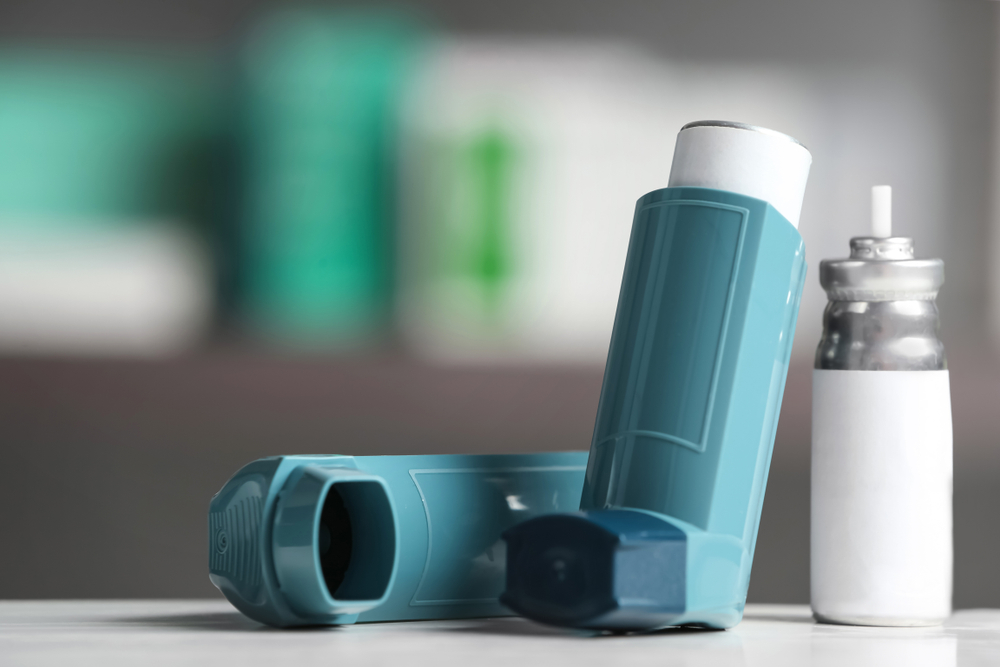Although 60-day prescribing is potentially good news for patients with asthma and chronic obstructive pulmonary disease, prescribers need to be aware of the different in-use shelf life of inhalers when selecting preventer inhalers for their patients.
The Pharmaceutical Benefits Scheme (PBS) has gradually introduced 60-day prescriptions of certain medicines for eligible patients with stable conditions. The first stage began on 1 September 2023, the second stage on 1 March 2024, and the third stage on 1 September 2024. This initiative will save individual patients up to $189.60 a year per medicine, resulting in an overall saving of more than $1.6 billion over the next four years for people buying PBS medicines.
To obtain a 60-day supply of medicines, a person must:
- have a stable ongoing health condition;
- have discussed their medication with their prescriber and be assessed as suitable to receive a greater quantity of their medicine;
- have received a new 60-day prescription.
People do not need a concession card to access a 60-day prescription.
The changes follow advice from the independent Pharmaceutical Benefits Advisory Committee (PBAC) that it was clinically safe and suitable to allow 60-day prescriptions for eligible patients. Prescribers have the option to prescribe these medicines for either 30- or 60-day prescriptions, according to their professional clinical judgement. A different item code is included on the PBS for 30-day and 60-day prescribing.
The full list of medicines recommended by the PBAC for 60-day prescribing is available on the medicine list for increased dispensing quantities. A searchable table of the PBS medicines that are offered for 60-day prescriptions is available.

Inhaler devices
From 1 September 2024, all preventer inhalers are included on the list for 60-day prescriptions.
Over 70 inhalers used for prevention of asthma and chronic obstructive pulmonary disease (COPD) may be prescribed for patients whose condition is stable. The PBS includes the following statement: “The condition must be stable for the prescriber to consider the listed maximum quantity of this medicine suitable for this patient.”
Budesonide inhalation solution (respules) and montelukast tablets are also included in the 60-day dispensing list. Salbutamol, terbutaline and ipratropium inhalers and salbutamol respules are not included.
In-use shelf life
All medicines, including inhalers, have an expiry date, usually under specified storage conditions. Medicines should not be used after their expiry date. Expiry dates for inhalers are printed on the outer cardboard box and on the canister and/or plastic device.
Some inhaler devices will also be packaged in a foil laminate or plastic pouch, usually containing a sachet of drying agent inside the outer cardboard box. Approved Product Information and Consumer Medicines Information may include recommendations on in-use shelf life. Once these inhalers are opened, they must be used within a specified timeframe to avoid reduced stability and efficacy.
Dry powder inhalers (DPIs) can be classified as multi-dose reservoirs, single-dose blisters or single-dose capsules. Multi-dose reservoir DPIs (eg, Turbuhaler, Genuair, Spiromax, Easyhaler) contain all doses stored in a chamber within the device. Multi-unit DPIs (eg, Accuhaler, Ellipta, Ciphaler) contain a foil strip with individual metered dose blisters. Single-dose capsule DPIs contain the metered dose and are inserted prior to use in a reusable device (eg, Handihaler, Zonda, Breezhaler).
Multi-dose reservoir DPIs are particularly susceptible to high humidity. Some powder formulations are extremely sensitive to moisture. Adsorption of moisture can significantly increase powder cohesiveness, which decreases the generation and dispersal of fine particles during inhalation and may increase oropharyngeal deposition, potentially reducing efficacy and increasing local adverse effects.
Implications of 60-day prescribing
With 60-day prescribing, patients may receive multiple inhalers at each dispensing. It is possible that patients may open more than one inhaler device at the same time, thus exposing the inhaler to the same in-use shelf life. This is particularly relevant to Ellipta and some Easyhaler devices (Bufomix 200/6, Bufomix 400/12, Salflumix 250/50), which have a one-month in-use shelf life, potentially leading to suboptimal efficacy, wastage and harmful environmental impact.
In addition, budesonide–formoterol (Bufomix Easyhaler 200/6, 60 actuations) is approved on the PBS (PBS code 14166N) for mild asthma as an anti-inflammatory reliever (AIR) therapy, with two inhalers and two repeats. If prescribed for use only as needed for control of asthma symptoms, the one-month in-use shelf life is likely to expire well before the patient has used all the medicine. This would lead to significant wastage. Other inhalers that are PBS listed for mild asthma with AIR therapy have a longer (three months) in-use shelf life (Rilast Rapihaler 100/3, Symbicort Rapihaler 100/3) or no specified in-use shelf life (Rilast Turbuhaler 200/6, Symbicort Turbuhaler 200/6).
In addition, Fostair and Trimbow inhalers must be stored in a refrigerator before dispensing. However, they may be stored at room temperature after dispensing and in-use for a maximum of two months. There is a potential that patients may open both inhaler devices at the same time, thus exposing the inhaler to the same in-use shelf life. Although both inhalers should be used within two months, poor adherence may extend the in-use period.
Many Australians are missing out on essential treatment for asthma due to out-of-pocket costs, leading to suboptimal control of asthma. Therefore, 60-day prescribing is potentially good news for patients with good asthma control if it reduces the cost of their preventer medicines. Prescribers need to be aware of the different in-use shelf life of inhalers when selecting preventer inhalers. Pharmacists should discuss storage and in-use shelf life with patients. Unnecessary wastage of inhalers imposes substantial economic burden in terms of Medicare-funded medical services and medications, and the environmental impact of inhalers.
Download the inhaler shelf life fact sheet here.
Clinical Associate Professor Debbie Rigby, clinical executive lead, National Asthma Council Australia, is an advanced practice pharmacist with over 40 years’ experience across clinical pharmacy practice, interdisciplinary care, policy and advocacy, clinical governance, guidelines development and education.
She has a specific interest in respiratory conditions and has been credentialed as an asthma educator. She is also passionate about improving the care and support for people living with asthma through multidisciplinary patient-centred care, shared decision making and evidence-based medicine.
The statements or opinions expressed in this article reflect the views of the authors and do not necessarily represent the official policy of the AMA, the MJA or InSight+ unless so stated.
Subscribe to the free InSight+ weekly newsletter here. It is available to all readers, not just registered medical practitioners.
If you would like to submit an article for consideration, send a Word version to mjainsight-editor@ampco.com.au.

 more_vert
more_vert